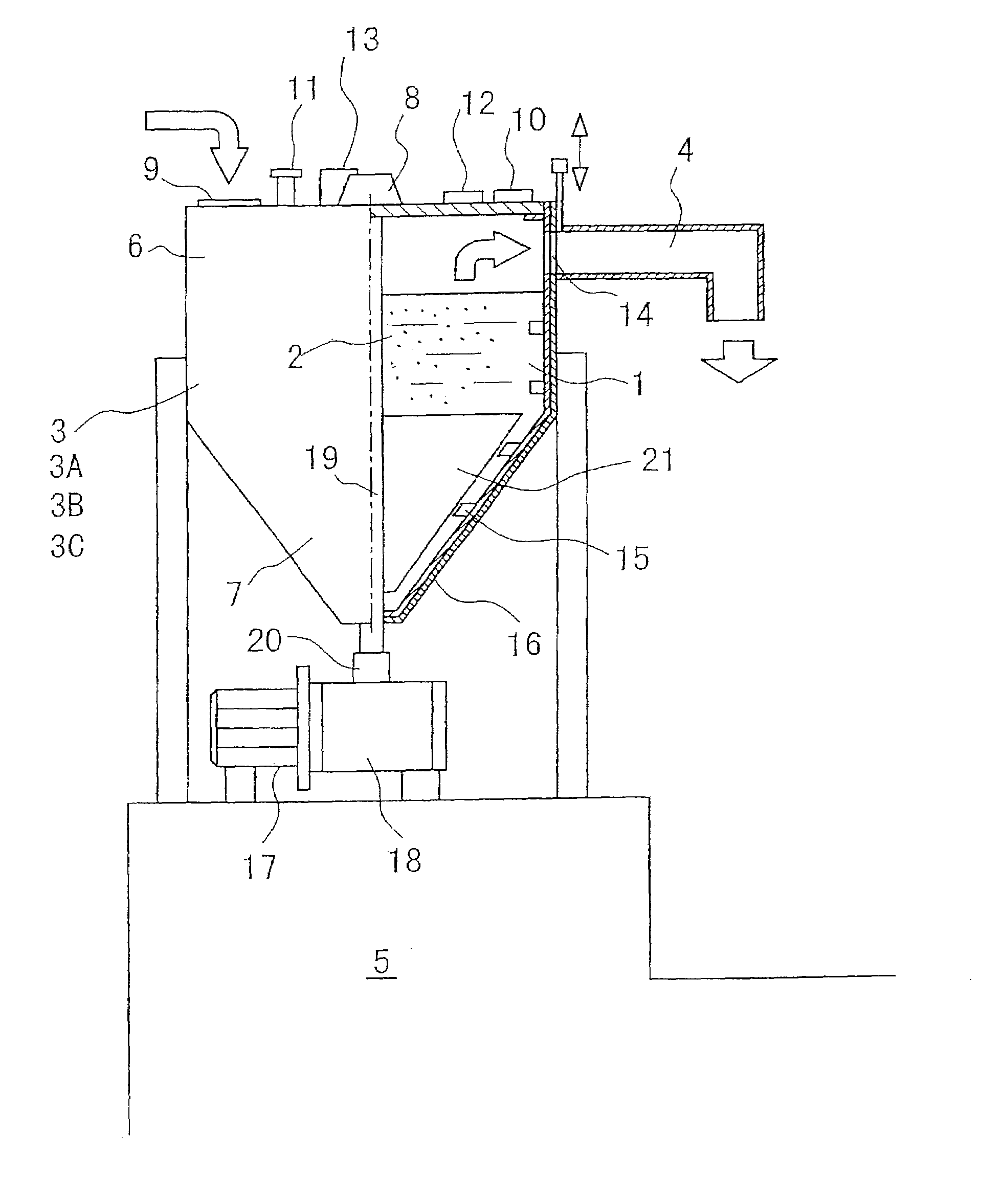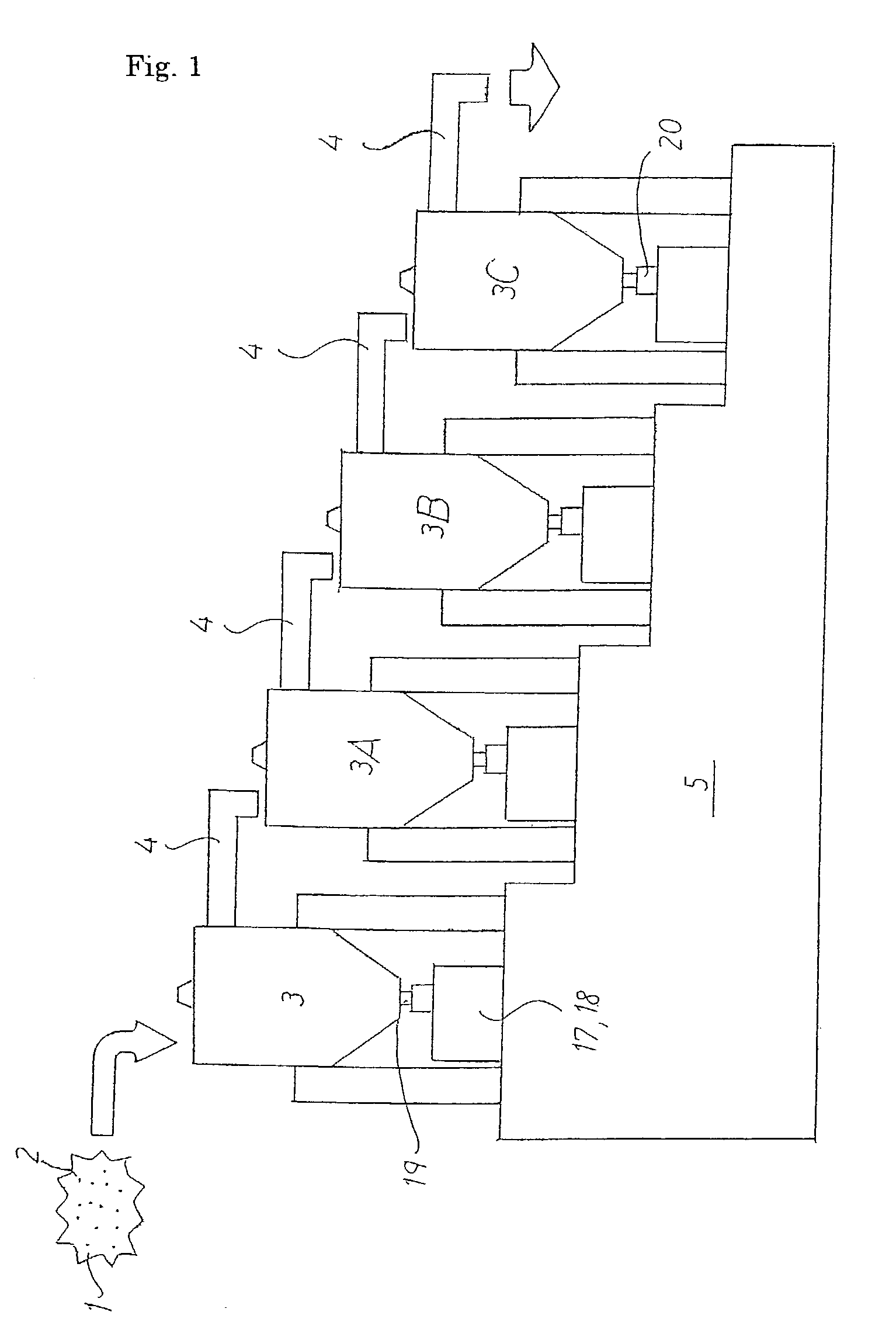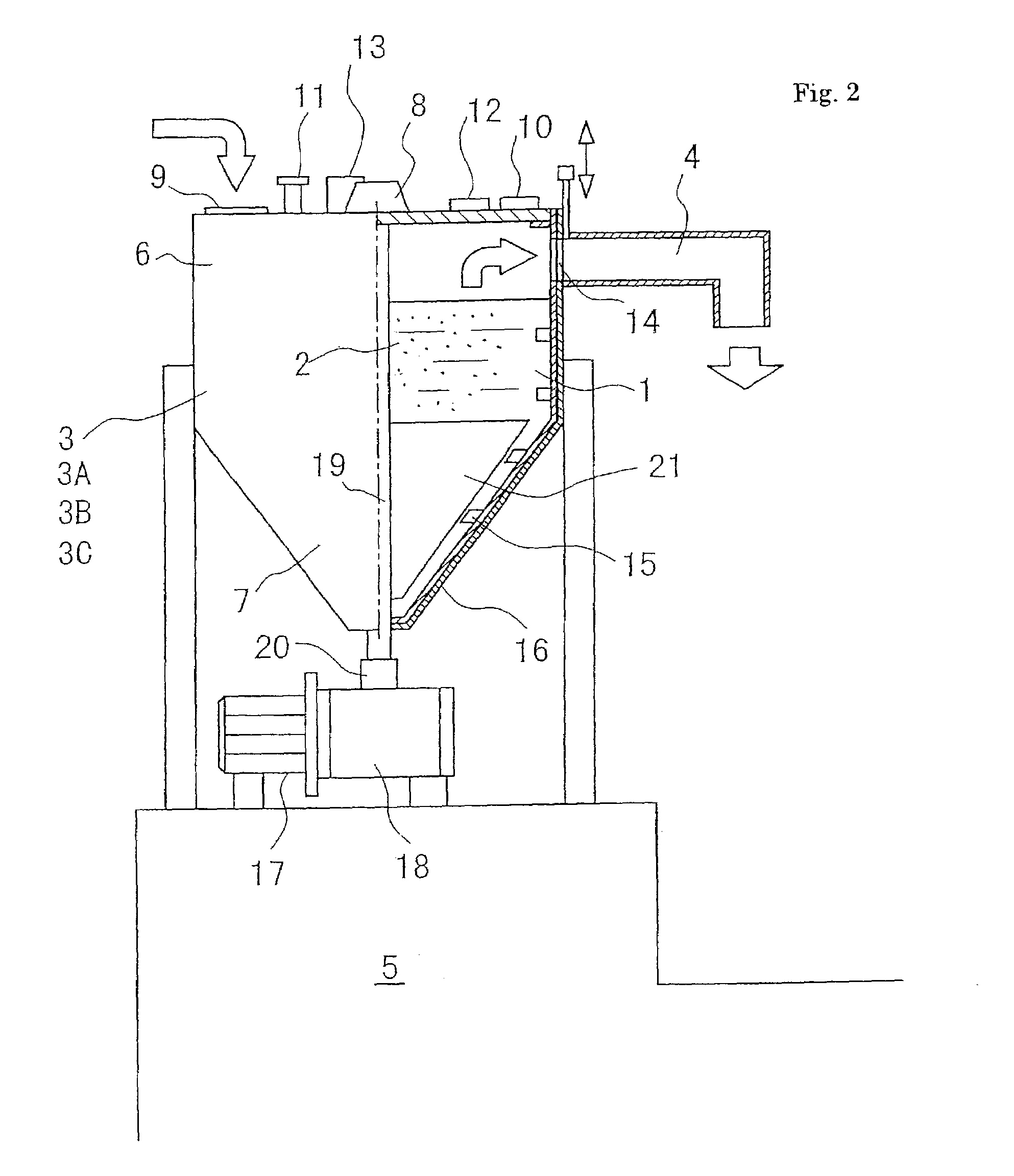Organic waste processing method and device therefor
a technology of organic waste and processing method, applied in the field of organic waste processing method and device, can solve the problems of insufficient mechanical technology, delay in disposing time, and inability to solve the problem of maggot infestation, etc., to achieve the effect of avoiding heat, increasing the fermentation temperature of organic waste, and avoiding maggot infestation
- Summary
- Abstract
- Description
- Claims
- Application Information
AI Technical Summary
Benefits of technology
Problems solved by technology
Method used
Image
Examples
Embodiment Construction
[0022]A detailed explanation of the best mode for carrying out the present invention is made referring to the drawings. An organic waste processing method and device in the present embodiment, as shown in FIGS. 1 and 2, processing tanks 3, 3A, and 3B that substantially seal organic waste 2 with aerobic microorganism implanted beforehand are aligned from upstream to downstream, outlet 14 on the upper part of each medium-sized processing tank 3, 3A, 3B, and 3C and inlet 9 on the top part of processing tanks 3A, 3B, and 3C placed downstream and adjacent are connected by passage 4, motor 17 is installed on the bottom part of each processing tank 3, 3A, 3B, and 3C, and at the same time, rotating shaft 19 that rotates by motor 17 drive is set up passing through the top and bottom parts inside each processing tank 3, 3A, 3B, and 3C, a number of stirring blades 21 that mix aerobic microorganism 1 and organic waste 2 are installed on rotating shaft 19, and a large amount of organic waste 2 i...
PUM
| Property | Measurement | Unit |
|---|---|---|
| temperature | aaaaa | aaaaa |
| height | aaaaa | aaaaa |
| temperature | aaaaa | aaaaa |
Abstract
Description
Claims
Application Information
 Login to view more
Login to view more - R&D Engineer
- R&D Manager
- IP Professional
- Industry Leading Data Capabilities
- Powerful AI technology
- Patent DNA Extraction
Browse by: Latest US Patents, China's latest patents, Technical Efficacy Thesaurus, Application Domain, Technology Topic.
© 2024 PatSnap. All rights reserved.Legal|Privacy policy|Modern Slavery Act Transparency Statement|Sitemap



